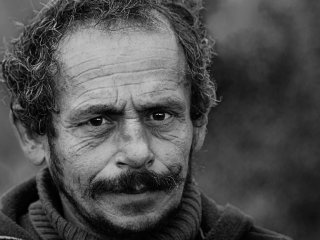Posted February 9th, 2016
By Kris Powers
The American Psychological Association reports that the nation’s economic crisis has deeply affected the lives of millions of Americans. Skyrocketing foreclosures and job layoffs have devastated many families, particularly those living in low-income communities.
The Census Bureau defines poverty on a sliding scale according to the size of a family unit, but for a family of four, the poverty threshold in 2014 was just over $24,000. For one person, it was just over $12,000.
Below are a few facts about poverty in the United States. According to the Census Bureau, in 2014 there were:
- 46.7 million people in the United States living in poverty
- 15.5 million (21.1 percent) children under the age of 18 living in poverty
- 4.6 million seniors age 65 and older living in poverty
Poverty is never an easy topic to discuss. The idea of hunger, homelessness, and the accompanying fear those ideas evoke make it difficult to talk about; especially with children. However, once students and adults alike learn about poverty and how it affects many Americans, they may become motivated to help. Learning the facts may inspire all of us to ask, “What can we do to make a difference?”
What can you do to help children and families struggling with poverty, hunger and homelessness? The American Psychological Association suggests the following:
- Volunteer your time with charities and organizations that provide assistance to low-income and homeless children and families.
- Donate money, food and clothing to homeless shelters, food pantries and other charities in your community.
- Donate school supplies and books to under-resourced schools in your area.
- Make your voice heard! Support public policy initiatives that seek to:
1. Improve access to physical, mental, and behavioral health care for low-income Americans by eliminating barriers such as limitations in health care coverage.
2. Increase the minimum wage, affordable housing and job skills training for low-income and homeless Americans.
3. Intervene in early childhood to support the health and educational development of low-income children.
4. Provide support for low-income and food insecure children such as Head Start, the National School Lunch Program, and the Temporary Assistance for Needy Families (TANF) authorization.
5. Increase resources for public education and access to higher education.
6. Support research on poverty and its relationship to health, education, and well-being.
Need inspiration? Take some time to research individuals and organizations that have made a difference in poverty awareness. Take Zach Bonner for example. As an elementary student in 2009, he walked 668 miles from Atlanta, Georgia, to Washington, D.C. to raise awareness about homeless children. Along the way, he raised tens of thousands of dollars to help children living in poverty.
The Blessings in a Backpack program fights food insecurity in children by mobilizing schools and communities to provide food on the weekends to elementary school children who might otherwise go hungry. Many children depend on the federal free and reduced meal program at their school during the week and sometimes, these school-day meals are the only ones they get. When school lets out on Friday afternoons, Blessings in a Backpack asks, "Who will feed the children this weekend"?
Educating ourselves about the social benefits and personal significance of helping others is just one of the valuable lessons that can be taught during National Poverty Awareness month every January. Empowering communities to come up with solutions to homelessness and hunger is something that can be done all year round.

